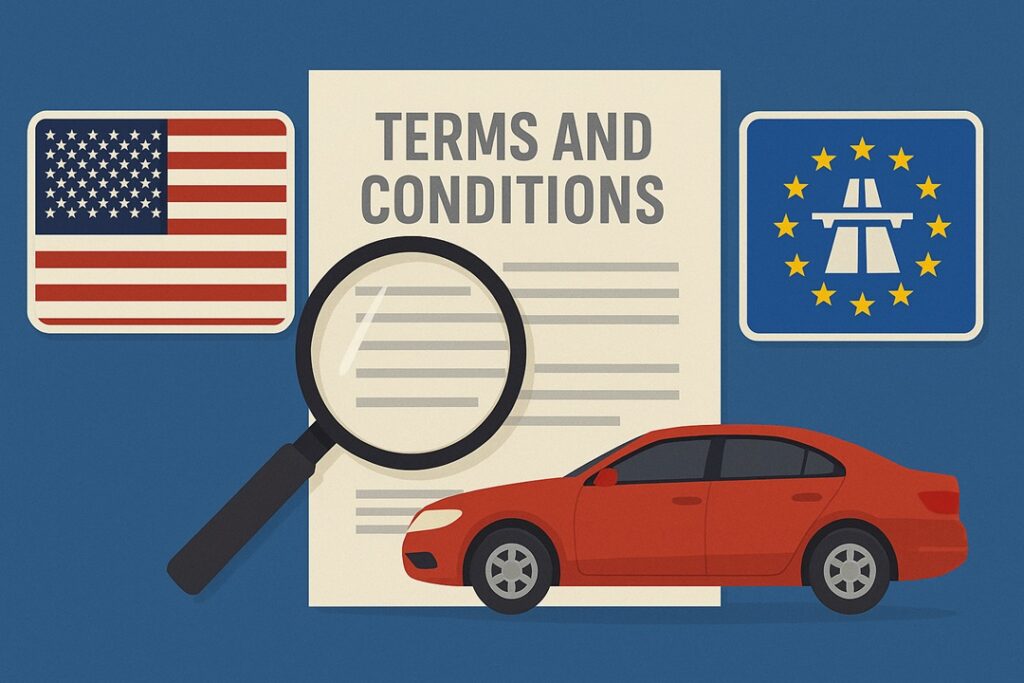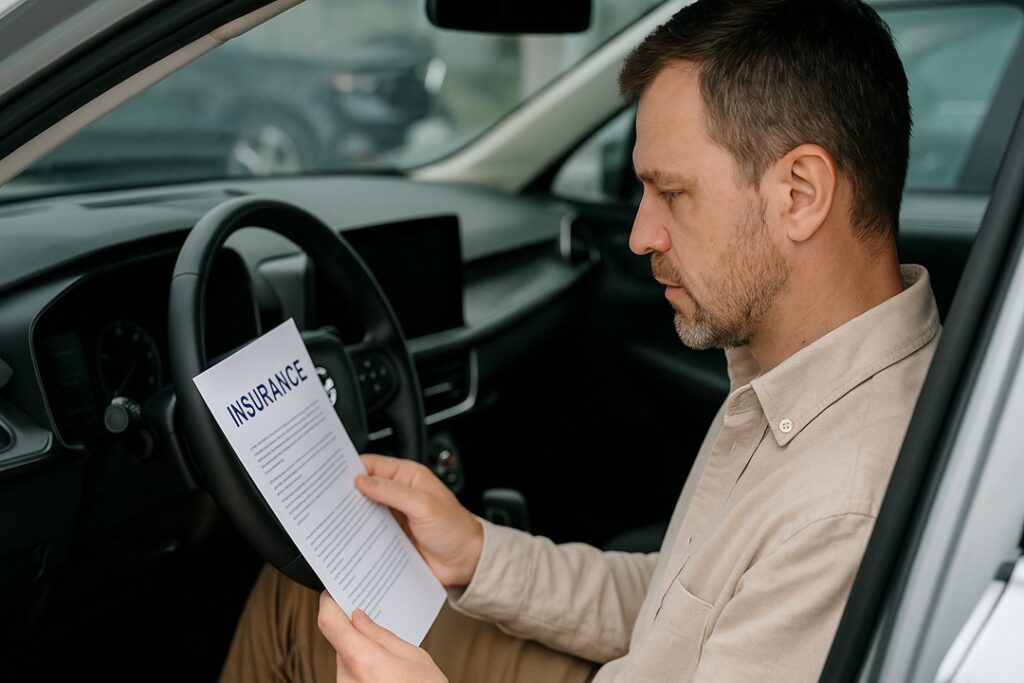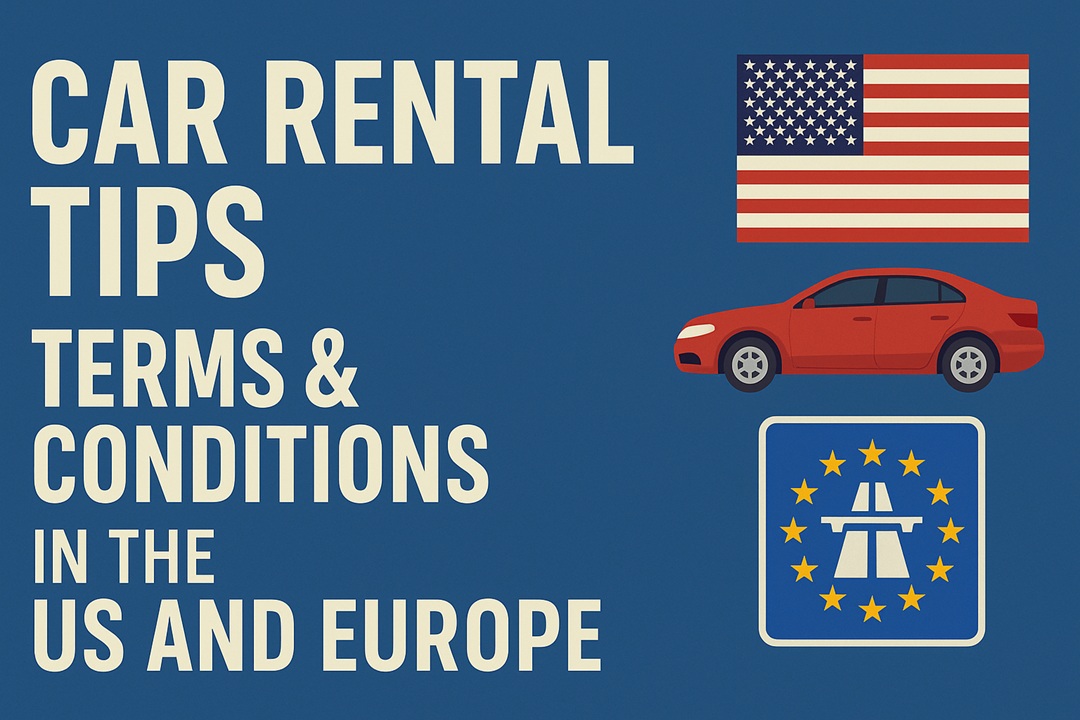What You Think You Know — and Why It Might Not Be Enough
If you’re used to renting cars in the US, chances are you’ve done it without much thought. You click through a few screens, decline the extra insurance, pick up the car, and hit the road. Easy, right? But the moment you try doing the same in Europe, things can get messy. Fast. That’s because the rules of the game shift once you’re across the Atlantic. What you assume is “standard” in the US might be wildly different in countries like Germany, Spain, or Italy.
Let’s be real: most people don’t read the fine print. But in car rentals, that fine print isn’t just legal fluff—it’s where the real costs, limitations, and surprises are hidden.
The Fine Print Nobody Reads — Until It’s Too Late
Terms and conditions aren’t thrilling bedtime reading, but they matter. They cover everything from mileage limits and driver eligibility to late return fees and fuel policies. In the US, rentals are usually pretty lenient. Unlimited mileage is common. You’re often allowed to cross state lines without blinking. And even if you forget to fill up the tank, you can just pay the overpriced fuel charge and move on.

In Europe, it’s a different story. Some companies offer limited mileage and will charge you per kilometer once you go over. Renting a car in Paris and driving it down to Barcelona? Better check if international travel is even allowed. Many contracts flat-out forbid it, or slap you with a fee.
The Collision Damage Waiver Trap
One of the biggest headaches in car rentals, both in the US and Europe, is the Collision Damage Waiver (CDW). In the US, CDW is optional and expensive. Rental agents are trained to upsell it, making it sound like a lifesaver. But many American credit cards offer CDW coverage, making it redundant—as long as you decline the rental company’s CDW and use that card to pay.
In Europe, CDW is often included in the price. Sounds great, but here’s the catch: it’s usually a partial waiver with a high deductible. That means if you damage the car, you might still be on the hook for the first €1000 or more. And that’s assuming you’re not found at fault for “gross negligence” — a vague term that can cover anything from driving on an unpaved road to parking illegally.
Pro tip: Consider third-party insurance providers (like RentalCover or Allianz). They’re often cheaper and provide fuller protection than what the rental desk offers.
Cross-Border Confusion: Taking a Car from One Country to Another
In the US, you can rent a car in New York and drive it to California without telling anyone. Try that in Europe and you might void your contract.
Let’s say you rent a car in Munich and decide to take a scenic route through Austria to get to Italy. Sounds like a great road trip. But unless your contract explicitly allows international travel, you could face hefty fines or lose your insurance coverage. Some rental companies even use GPS tracking to monitor where the car goes.
And if you’re thinking of taking a rental from mainland Europe to the UK (or vice versa), prepare for even more paperwork—and probably a surcharge.
Quick tip: Always tell the rental company your travel plans when booking. They can issue a “green card” (international insurance certificate) and make sure your car is legal in other countries.
Age Isn’t Just a Number — Especially in Europe
In the US, once you hit 25, you’re golden. Below that, you might pay a young driver surcharge, but it’s usually manageable.
In Europe, things get more complicated. Many countries require drivers to be at least 21, and some don’t allow anyone under 25 to rent certain vehicle categories (like vans or luxury cars). In Ireland, for example, some rental agencies won’t rent to anyone under 28. Yes, twenty-eight.
And if you’re over 70? In some parts of Europe, you may need a doctor’s note or face additional restrictions. The rules aren’t uniform, so double-check before booking.
Life hack: If you’re under 25, look for companies with no or reduced young driver fees — like Sixt or Centauro in Europe. Some run promotions for younger travelers.
Deposits, Holds, and Unexpected Charges
When you pick up a rental in the US, it’s normal for the company to place a hold of $200 to $300 on your card. It’s released after you return the car in good shape.
In Europe, the hold can be much higher. In Germany or the Netherlands, it’s not unusual to see deposits of €1000 or more. If you don’t have a credit card with enough available balance, they might refuse to rent to you. Debit cards? Often a no-go.
And don’t forget the dreaded post-return charges: for scratches you didn’t notice, fuel not topped off, or toll tags not returned. These can show up days later.
Real-world tip: Always take photos of the car (all sides, interior, fuel gauge, mileage) at pickup and drop-off. It’s your best defense against surprise fees.
Fuel Policies: Full-to-Full or Prepaid — and Why It Matters
In the US, “full-to-full” is the norm: pick up the car with a full tank, return it the same way. If not, you pay a steep refueling fee.
In Europe, things get trickier. Some companies offer prepaid fuel, charging you upfront and telling you to return the car empty. The catch? You rarely return it bone dry, meaning you paid for gas you didn’t use. Others might claim the tank was full when it wasn’t, unless you prove otherwise.
Simple advice: Stick to full-to-full and keep the receipt from your last fuel stop.
When Insurance Isn’t Really Insurance

You might assume that your US auto insurance or credit card covers you abroad. That’s only partially true. Most US car insurance policies do not cover rentals outside North America. And while many credit cards offer CDW, they don’t include liability coverage.
Liability insurance is required in Europe and is usually included in the base rental price, but the limits vary. If you cause an accident and injure someone, basic coverage might not be enough.
Insider tip: Call your credit card company before your trip. Ask if it includes CDW for international rentals. If not, consider buying standalone coverage ahead of time—it’s way cheaper than buying it at the counter.
Returning the Car: Grace Periods and Late Fees
US rental companies tend to offer a grace period of 29 to 59 minutes. Return your car within that window, and you might avoid an extra day’s charge.
In Europe, not so much. Show up even 10 minutes late in Rome or Brussels and you could be billed for a full extra day. The rules are stricter, and staff might not be flexible, especially during busy seasons.
Final thought: Always aim to return the car at least 30 minutes early and get a signed return receipt if possible.
2025 Comparison Table: Rental Car Costs & Conditions
| Feature | United States | Western Europe (Average) |
|---|---|---|
| Daily Rental Rate (Compact Car) | $45–60 | €55–75 |
| CDW (per day, if not included) | $10–20 | €12–25 |
| Liability Insurance | Often not included | Usually included (varies by country) |
| Deposit/Hold on Card | $200–$300 | €800–€1500 |
| Young Driver Surcharge (Under 25) | $15–30/day | €10–40/day |
| Grace Period for Return | Up to 59 min | Often no grace period |
| Cross-Border Use | No restrictions | Often restricted or requires extra paperwork |
| Fuel Policy | Full-to-Full standard | Varies: Full-to-Full or Prepaid |
| Credit Card Required | Preferred but not always | Often mandatory |
Final Thoughts: Reading the Terms Is Not Optional
Renting a car shouldn’t feel like navigating a legal maze, but it often does—especially when you’re traveling. The best way to protect yourself is simple: read the terms, ask questions, and don’t assume anything. Just because something is standard in the US doesn’t mean it flies in Europe.
A rental car can be your ticket to freedom on the road—or a headache that follows you home on your credit card statement. Be informed, be curious, and you’ll be fine.
